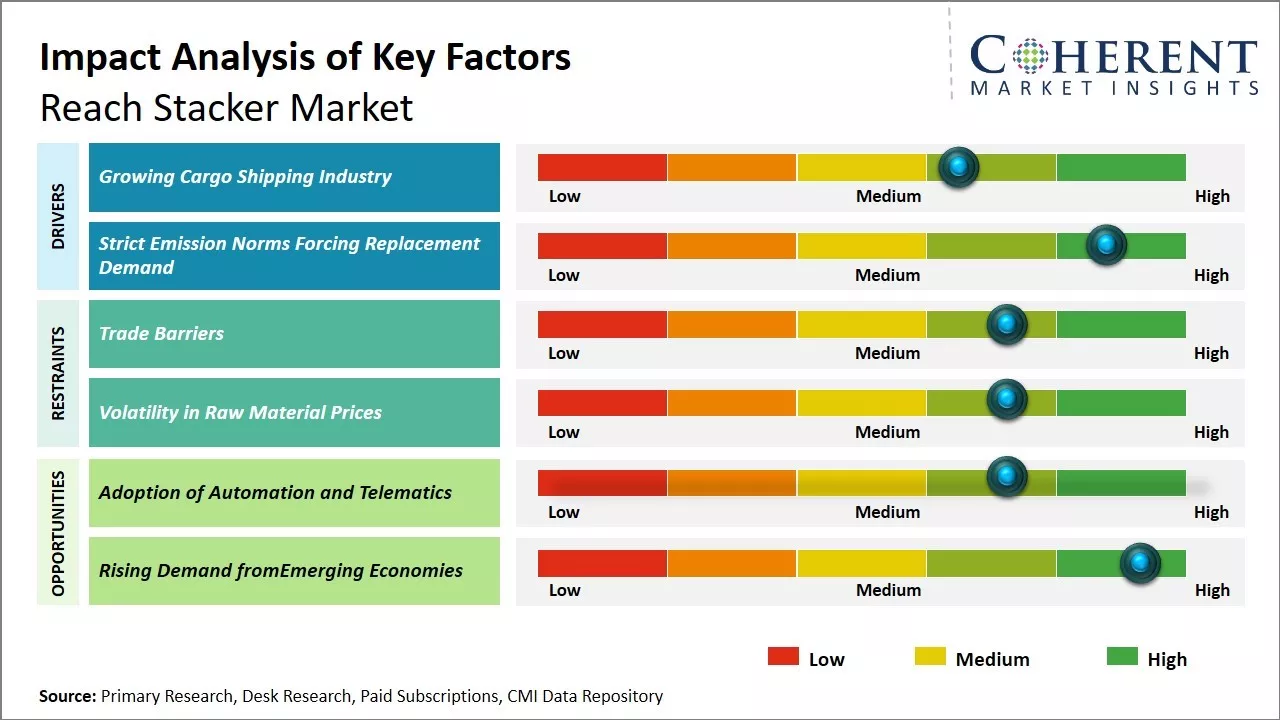The reach stacker market is estimated to be valued at USD 2.51 Bn in 2025 and is expected to reach USD 3.72 Bn by 2032, growing at a compound annual growth rate (CAGR) of 5.8% from 2025 to 2032.

To learn more about this report, Request sample copy
The demand for reach stackers is driven by growing seaborne trade activities and increasing container handling activities at ports and intermodal terminals. Reach stackers are made up of an over-cab design with narrow clearance for enhanced maneuverability and access, are electrically powered for reduced emissions, and feature an angled mast and telescopic forks to retrieve shipping containers stacked multiple rows deep. Advancing technologies such as automated guided vehicles, diesel particulate filters, and electric power trains to reduce environmental impact will further push the demand for reach stackers in the coming years. Developing economies in Asia Pacific continue to invest heavily in port infrastructure development supporting trade, which will drive the need for modern cargo handling equipment such as reach stackers.
Growing Cargo Shipping Industry
The reach stacker market is witnessing strong growth in demand driven primarily by the expanding cargo shipping industry globally. Major ports across countries are investing heavily in improving their infrastructure and cargo handling capacities to keep up with rising trade volumes. This has significantly driven the demand for sophisticated cargo handling equipment such as reach stackers. With world merchandise trade projected to grow further in the coming years, ports and logistics hubs are scrambling to upgrade their fleets with advanced reach stackers that can work efficiently even in constrained areas. For instance, in October 2023, the World Trade Organization projected that the volume of world merchandise trade is expected to grow by 3.3% in 2025.
Reach stackers appeal to port authorities and terminal operators as they provide fast and flexible stacking and destacking of containers compared to traditional equipment. Their ability to traverse shorter distances and maneuver precisely even in cramped quay spaces allows swift clearing of container ships for faster turnarounds. This has become a critical capability, given how even minor delay in ship schedules can massively disrupt complex port operations and global supply chains. Reach stackers purchased in large numbers by ports also help improve productivity through intensive multi-shift operations. With technology progressing rapidly, equipment manufacturers are also offering reach stackers equipped with advanced features like driver-assistance, telematics, and safety systems that further boost efficiency for busy ports.
Joining thousands of companies around the world committed to making the Excellent Business Solutions.
View All Our Clients